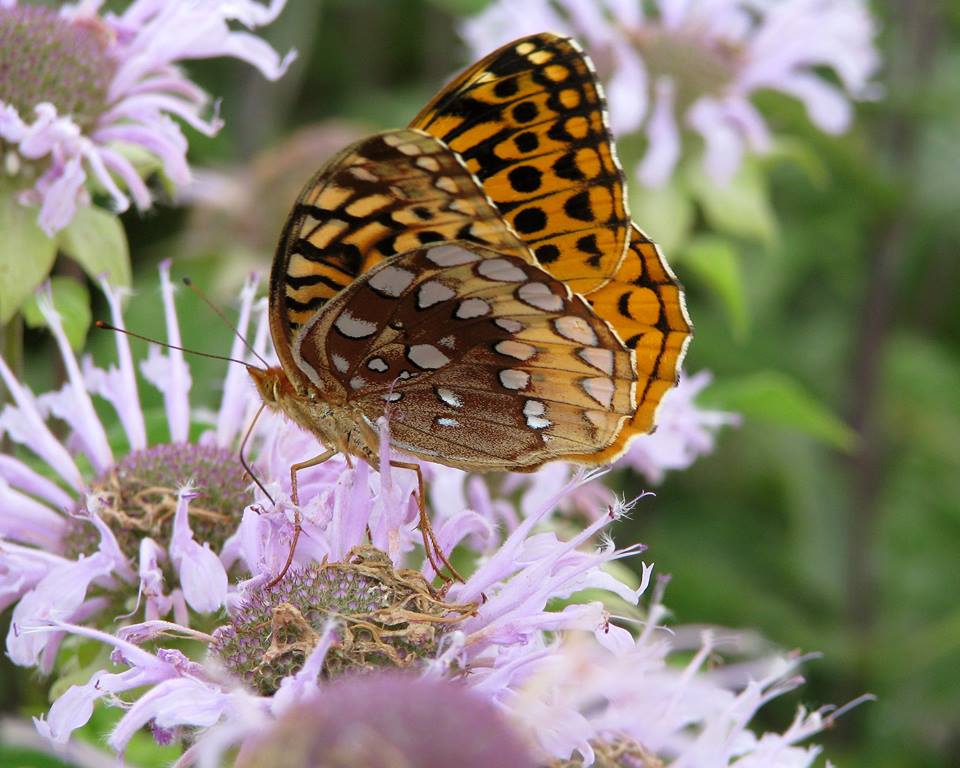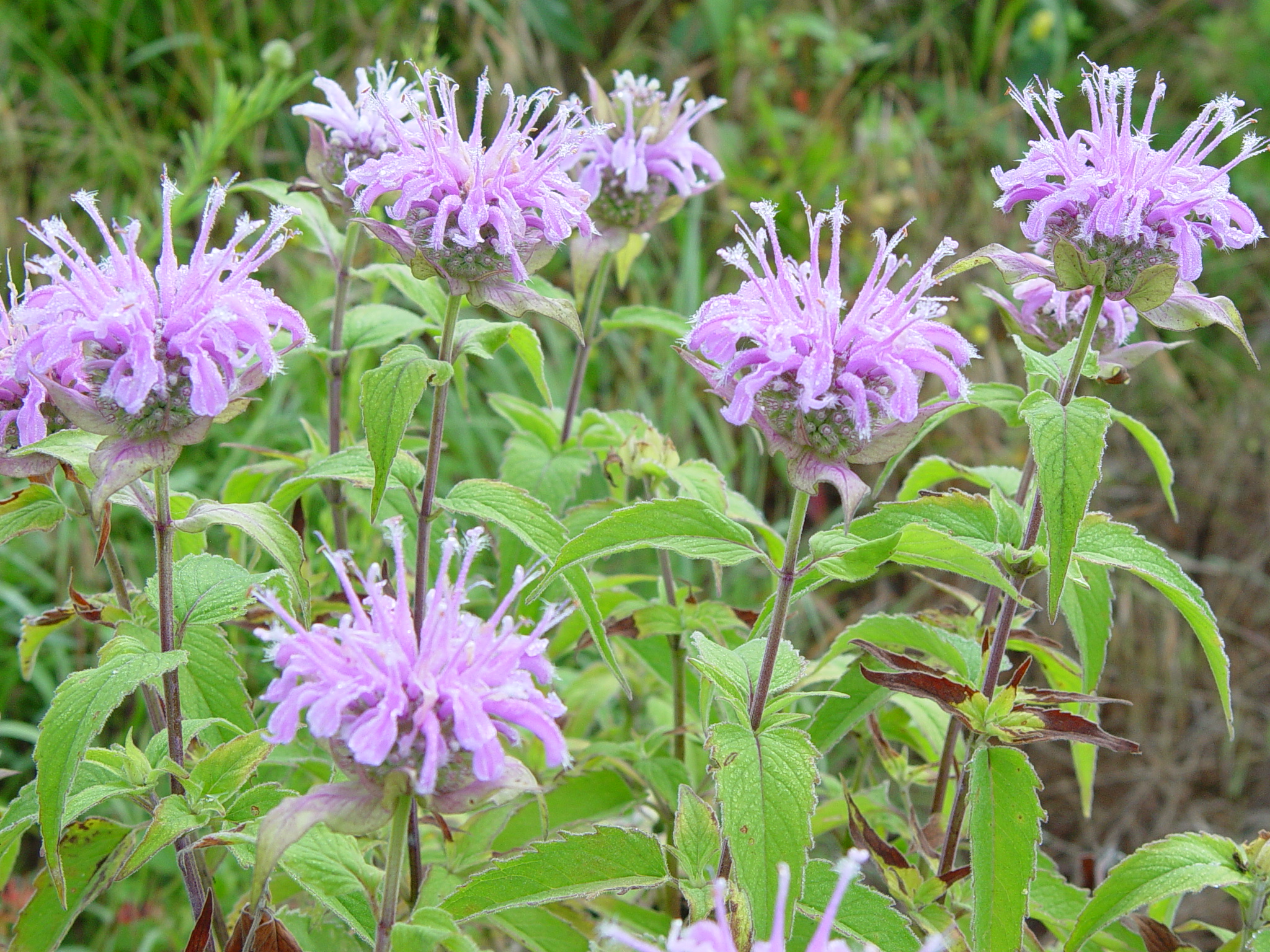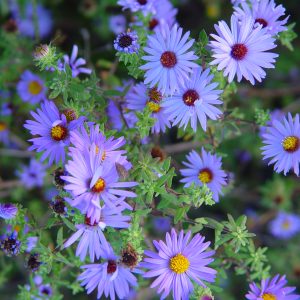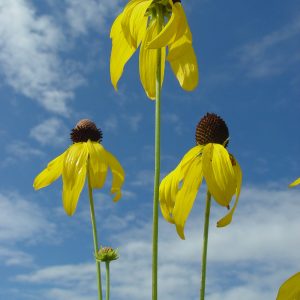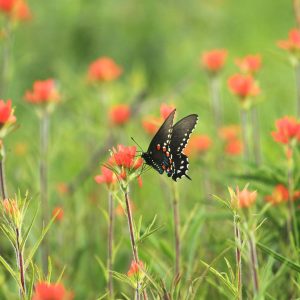Wild Bergamot
Monarda fistulosa
Attracts a variety of pollinators; fibrous, shallow root system is great for erosion control
$3.00 – $98.00
For quantity discount pricing, request a quote.
Description
Monarda fistulosa, commonly called wild bergamot, is a common Missouri native perennial forb (wildflower) which occurs statewide in dryish soils on prairies, dry rocky woods and glade margins, unplanted fields and along roads and railroads. Can be used in teas.
Wildlife notes
The nectar of wild bergamot attracts long-tongued bees, bee flies, butterflies, skippers, and hummingbird moths. Among the long-tongued bees, are such visitors as bumblebees, Miner bees, Epeoline Cuckoo bees, and large Leaf-Cutting bees. A small black bee (Dufourea monardae) specializes in the pollination of Monarda flowers. Sometimes Halictid bees collect pollen, while some wasps steal nectar by perforating the nectar tube. The Ruby-Throated Hummingbird also visits the flowers. The caterpillars of the moths Sphinx eremitus (Hermit Sphinx) and Agriopodes teratophora (Gray Marvel) feed on the foliage. A seed bug (Ortholomus scolopax) is sometimes found in the flowerheads.
Forage notes
Livestock usually avoid this plant, probably because of the oregano-mint flavor of the leaves and their capacity to cause indigestion; they may contain chemicals that disrupt populations of beneficial bacteria in the digestive tract.
Landscaping notes
Best grown in dry to medium moisture, well-drained soils in full sun to part shade. Tolerates somewhat poor soils and some drought. Plants need good air circulation. Deadhead flowers to prolong summer bloom. Tends to self-seed. Provides color and contrast for the herb garden, wild garden, native plant garden, meadow or naturalized area.
Restoration notes
Habitats include moist to slightly dry black soil prairies, hill prairies, sandy Black Oak woodlands, savannas and woodland borders, thickets, borders of limestone glades, abandoned pastures, and landfills.
This species is commonly used in the following mixes: Prairie Patchwork Mix, Butterfly & Hummingbird Mix
Additional information
| Weight | N/A |
|---|---|
| Units | Packets, Ounces, Pounds |
| Light | Full Sun to Part Shade |
| Seeding Rate | 3 bulk lbs/acre |
| Soils | Average |
| Height | 30"-48" |
| Bloom Month | Jun, Jul |
| Color | Purple |
| Specialty Uses | Butterfly, Cut Flower, Medicinal, Tea |
| Cattle Palatability | Poor |
| # seeds/pkt | 200 |
| Packet coverage area | 5 sq. ft |
| Life Cycle | Perennial |

